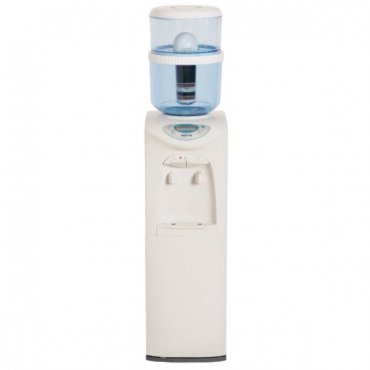Great Awesome Deals! Fast Shipping Across Australia!
Menu
-
-
Water Coolers
-
Water Filters & Purifiers
-
Water Filter System
-
Whole House Filter
- Single Stage Whole House Filter 10"
- Twin 10" Big Blue Whole House Filter 10" X 4.5"
- Triple Stage Whole House Filter 10"
- Anti Scale Whole House Big Blue Water Filter Replacement Cartridges 10" x 4.5"
- 2 x 1 Micron Coconut Carbon Block Water Filter 10" x 4.5
- Whole House Water Filter System Replacement Pack
- Single Big Blue Carbon Block Filter Cartridge MWF 10″ x 4.5″
- Twin Big White/Blue Polyspun Sediment Filter Cartridge MWF 10″ x 4.5″
- Triple Big White/Blue Polyspun Sediment Filter Cartridge MWF 20″ x 4.5″
- Water Bubbler
-
Reverse Osmosis System
- RO 4000 Benchtop Reverse Osmosis Water Filter System with American Alkaline
- RO 3000 3 Stage Benchtop Reverse Osmosis
- RO 4000 Benchtop Reverse Osmosis Water Filter System with Standard Alkaline
- Reverse Osmosis Water Filter Replacement Cartridge
- Omnipure K-2540 Micron Sediment Filter
- Omnipure K5555 Water Filter Ion Exchange
- Filmtec 75 TFC Residential RO Membrane
- Filmtec 100 GPD RO Membrane
- RO Alkaline Water Filter Replacement Cartridge
- Omnipure K5650 - JJ Inline Filter 5 Micron with Pushin Connections
- Undersink Water Filter
- Countertop Water Filter
-
Shower Filters
- HOC High Output Shower Filter Replacement Cartridge
- Sprite Handheld Filter Cartridge
- Sprite Universal Shower Hose Filter - Chrome
- Hand Held Shower Pure 7 Setting Shower Filter Brushed Nickel
- Sprite Slimline Shower Filter Cartridge
- High Output Chrome Shower Filter - White
- High Output Chrome Shower Filter - Chrome Brass
-
Whole House Filter
-
Benchtop Water Filter System
-
Water Chiller
- Water Bottle
- Benchtop Water Purifier
- Water Distiller
- Replacement Water Filter Cartridges Guide
-
Locations
- Awesome Water Filters in Adelaide
- Awesome Water Filters in Darwin
- Awesome Water Filters in Hobart
- Awesome Water Filters in Brisbane
- Awesome Water Filters in Gold Coast
- Awesome Water Filters in Wollongong
- Awesome Water Filters in Sydney
- Awesome Water Filters in Melbourne
- Awesome Water Filters in Perth
- Awesome Water Filters in Canberra
-
- 1-800-789-781
- Login

Great Awesome Deals! Fast Shipping Across Australia!
Can Bacteria Grow in Water Coolers?
July 29, 2024 5 min read
Table of Contents
- Introduction to the Study
- Presence of Coliforms in Water
- High Concentration of Hazardous Organisms
- Source of Contamination
- Importance of Regular Maintenance
- Proper Storage of Water Bottles
- Implementing Maintenance Schedules in Workplaces
- Water Cooler Cleaning
- Sanitary Usage of Water Coolers for Everyone
- Final Thoughts

We always have to remember that no matter how many glasses of water we comply with drinking every day, it would go to waste if it’s not clean and contaminated. If you’re asking if bacteria can grow in water coolers, the best answer is YES if you’re an irresponsible owner. Whether you’re using a bottled or bottle-less water dispenser, the growth of unwanted organisms is possible.
The bubbles and the sounds when you take a glass of water from your dispenser mean that the cooler draws air from the outside to relieve pressure and drop water into your drink. The cooler is then filled with anything that is floating in the air.
The key to keeping your water coolers safe to use is keeping them clean from time to time and sanitary practices. Find out everything about bacteria growth in your water cooler in this article.
WATER BACTERIA COOLER GROWTH RISKS
Introduction to the Study
Using computer-based models, a USC research team studied how harmful bacteria survive and determined how to kill them. This study highlighted the risks associated with water coolers, revealing that they can become breeding grounds for bacteria if not properly maintained.
Presence of Coliforms in Water
You can find coliforms in all types of water. According to studies, bacterial species are visible in tap water, bottled water, and chilled water. Coliforms are a broad class of bacteria found in our environment, including the feces of warm-blooded animals. Their presence in drinking water suggests that disease-causing organisms (pathogens) could be in the water system.
High Concentration of Hazardous Organisms
There’s a possibility that every thousandth liter of water had 2,000 potentially hazardous organisms. This number estimates four times the amount of organisms the health department’s limitations. These pathogens can cause a range of illnesses, from mild gastrointestinal discomfort to severe, life-threatening diseases. The presence of such a high concentration of bacteria in water from coolers is alarming and indicates a serious public health concern.
Source of Contamination
The case wasn’t that the water wasn’t clean since water extracted from bottles directly had much fewer bacteria than water poured through the cooler. This finding suggests that the contamination is occurring within the cooler itself. The issue of the study was that the water that flowed through the cooler was mostly infected. Because the reservoirs were dirty, making the water contaminated and unsafe for consumption. The reservoirs and internal components of the coolers provide an ideal environment for bacterial growth, especially if they are not regularly cleaned and sanitized.
Importance of Regular Maintenance
Regular maintenance and cleaning of water coolers are crucial to prevent bacterial contamination. Users should follow the manufacturer’s guidelines for cleaning and sanitizing their coolers, including periodic deep cleaning to remove biofilm and other contaminants that can harbor bacteria. Additionally, using water coolers with advanced filtration systems can help reduce the risk of bacterial growth. These systems can remove contaminants and prevent bacteria from multiplying in the cooler’s reservoir.

Proper Storage of Water Bottles
Another preventive measure is to ensure that the water bottles used are also clean and stored properly. Bottled water should be stored in a cool, dark place to prevent bacterial growth before it is placed in the cooler. When changing the water bottle, care should be taken to avoid contaminating the bottle's neck and the cooler’s spout.
Implementing Maintenance Schedules in Workplaces
For organizations and workplaces that rely on water coolers, implementing a regular maintenance schedule is essential. Assigning responsibility for cleaning and sanitizing the coolers can help ensure that this task is not overlooked. Regular testing of the water quality from the cooler can also help identify potential contamination issues early and take corrective action before it becomes a significant health risk.
Water Cooler Cleaning
There are a few basic tips we can share to prevent this unfortunate event from happening.
Water Cooler Cleaning
- Before cleaning, unplug for at least 5 minutes.
- Drain the reservoir of all water.
- Mix 3 teaspoons of household bleach per gallon of water to make a cleaning solution.
- Use a clean cloth or sponge and wipe the bottleneck, the interior of the reservoir, the top of the dispenser, the grill, the front faucet, and the catch tray’s interior surfaces. Make sure to clean it thoroughly.
- Pour the bleach/water solution into the reservoir until full. Then, drain 2-3 cups through the faucets before refilling the stock of water.
- Allow for 10-15 minutes to pass before draining, rinsing thoroughly, and flushing well with fresh water.
- Remove the catch tray. Wash it in warm water and soap. Make sure to clean all the grills. Bacteria may grow here, too.
- Check for dust collection on the back grill and clean it if necessary.
- Refill the cooler with a new water bottle, then flush roughly a cup of bottled water through the faucet and trash. Rinse any remaining bleach through the tap until it’s clean and ready for use again.
SANITARY USAGE OF WATER COOLERS FOR EVERYONE
If you’re worried about contaminants lurking in your water cooler, you can print these sanitary tips to keep your dispenser clean. High-quality water is essential for keeping your health at the optimal level. Prevention is better than cure!
DRINKING:
- Wash hands before using the water cooler.
- Don’t touch the faucet when getting a glass of cold water.
- DON’T DRINK DIRECTLY FROM THE FAUCET!
REFILLING:
- Only use clean water bottles when refilling.
- Make sure to wash your hands before refilling the cooler.
- Try your best not to touch the neck of the water bottle.
FINAL THOUGHTS
Can bacteria grow in water coolers? YES. Bacteria can grow everywhere, and your water cooler is no exception. That’s why we need to maintain its cleanliness and practice hygienic usage of the dispenser. Prevention is better than cure. Don’t wait for anyone in your home or office to be sick because of contaminated water. Stay healthy and drink high-quality cold water from clean water coolers
Subscribe
Sign up to get the latest on sales, new releases and more …


